How to Install a Laundry Room Countertop
Our laundry room countertop has been a labor of love (and a labor of learning), but we are almost at the finish line. One of our biggest challenges was installing the countertop. So let me show your how to install a laundry room countertop.
When Sweet Shark and I started this laundry room makeover, we really didn’t know how it would turn out, exactly what would be involved or precisely what materials we would need. I just had a vision of what I wanted the laundry room to look like and that I wanted it to function more efficiently. But after all is dome I think we know how to install a laundry room countertop.
There were 2 main components of the makeover that involved hammers, nails and drills: the installation of an attractive backsplash and the construction of a laundry room countertop. It wasn’t hard, but it did involve some “deep thinking” and a “let’s do this with intent” attitude.
Remember, when this laundry room makeover was just a vision? I love DIY and crafts, but as I’ve mentioned, neither Sweet Shark nor I are exactly the handiman sort. We don’t own any electric saws, but I do love my electric drill. But like any project, you sometimes learn as you go, learning new skills and how to use new equipment or materials.
How to Install a Laundry Room Countertop
The steps we went through would work for any type of countertop application: an office, craft room, media area, or playroom. Several steps are necessary, so hang in there with me as I take you through how to install a laundry room countertop.
Preparation Before Installing the Laundry Room Countertop
After I painted the boards for the backsplash and we installed the backsplash, it was time to tackle the countertop.
We purchased 2 4′ X 8′, 3/4~inch pre~sanded birch plywood sheets at Home Depot and had them cut into the 2 large pieces we would need: 1 for the countertop (30 1/2″ X 75″) and 1 for the vertical support (30 1/2″ X 40 1/2″).
Next I painted the 2 boards using Amy Howard One Step Paint in Bauhaus Buff. We purchased 2 10′, 3/4~inch flat molding at Lowe’s to cover the raw exposed edges of the countertop and the ends of the backsplash. I first cut those pieces into the lengths I needed using my new miter box and hand saw. Then I painted most of those in Bauhaus Buff.
Materials for Installing the Laundry Room Countertop
Just to help you envision our laundry room countertop, here is what it looked like before we started the project and the plan for the countertop.
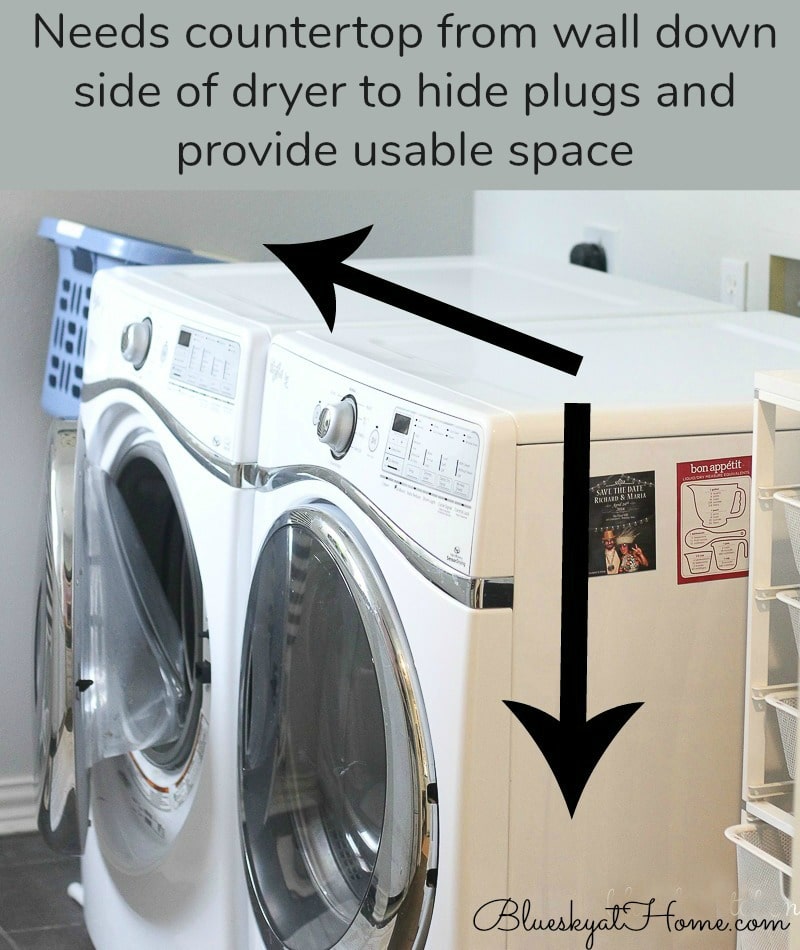
And now with the backsplash installed. . . .
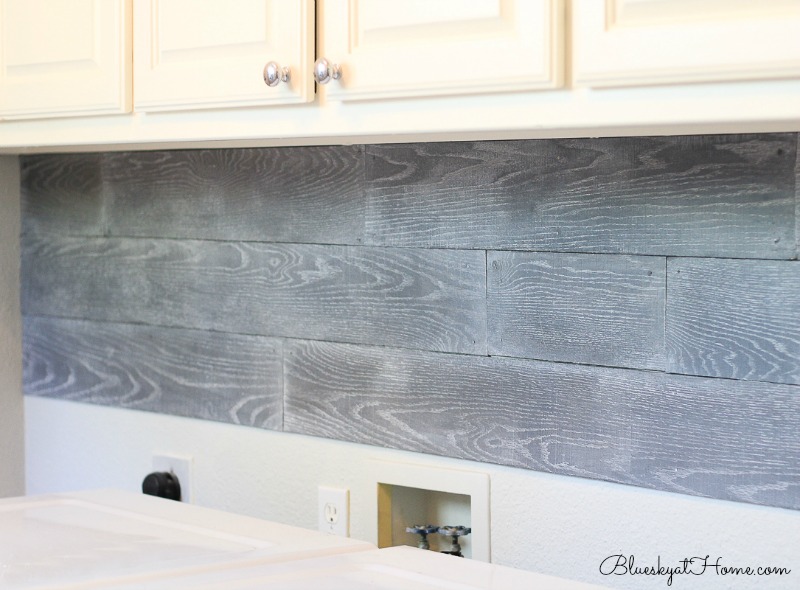
We would need supports for the countertop and a support for vertical side board. Technically, we needed 3 support boards:
- 1 board to support the countertop against the side wall; the depth of the countertop is 30 1/2″, but I measured a board to be 28″ long
- 1 board the length of the countertop minus 3/4″ to allow for the vertical board
- 1 board to be on vertical on the wall. The vertical board is 40 1/2″ tall. The vertical 1′ x 4′ needed to be 40 1/2 – 4″ to allow for the molding on the floor.
To be sure I had plenty of material, I purchased 2 10′, 1″ X 4″ pine boards at Lowe’s and had the nice man cut the boards for me. (I had him cut the extra wood into more lengths for another project, but that is for another day.)
If possible, this is the time to move out your appliances.
- You need the room to construct and install the new countertop.
- You want to protect your appliances from any damage during installation. It’s also a good time to check the maintenance of the washer and dryer. Here is an article that explains how to make sure your appliances are in good working order.
Installing the Laundry Room Countertop Supports
You’ve heard the saying, “measure twice, cut once”? I’m adding another important saying: “measure twice, install once”. The most important measurement was for the height of the countertop, which was 40 1/2″ from the floor. Add the 3/4″ thickness of the plywood sheets and the countertop is actually 41 1/2″ high. That height allows about 1 1/2″ between the top of the washer and dryer and the bottom of the countertop.
NOTE: On the back wall, we had the plug for the dryer and the water hookups. We cut the board for the back wall into 3 sections.
Before attaching the first countertop support, Sweet Shark and I measured the side wall, used the level, and marked the line with a pencil. The support would be attached directly under the line.
A few days later, after I had purchased the boards and had them cut, my older daughter and granddaughters came to town for a long visit and we put the project on hold for a few days. Then I enlisted Jenn’s help because she’s stronger than me, is good with her hands, and Sweet Shark was engrossed in a golf match on TV. Jenn and I first drilled pilot holes (I think that’s what they’re called.) in the support boards.
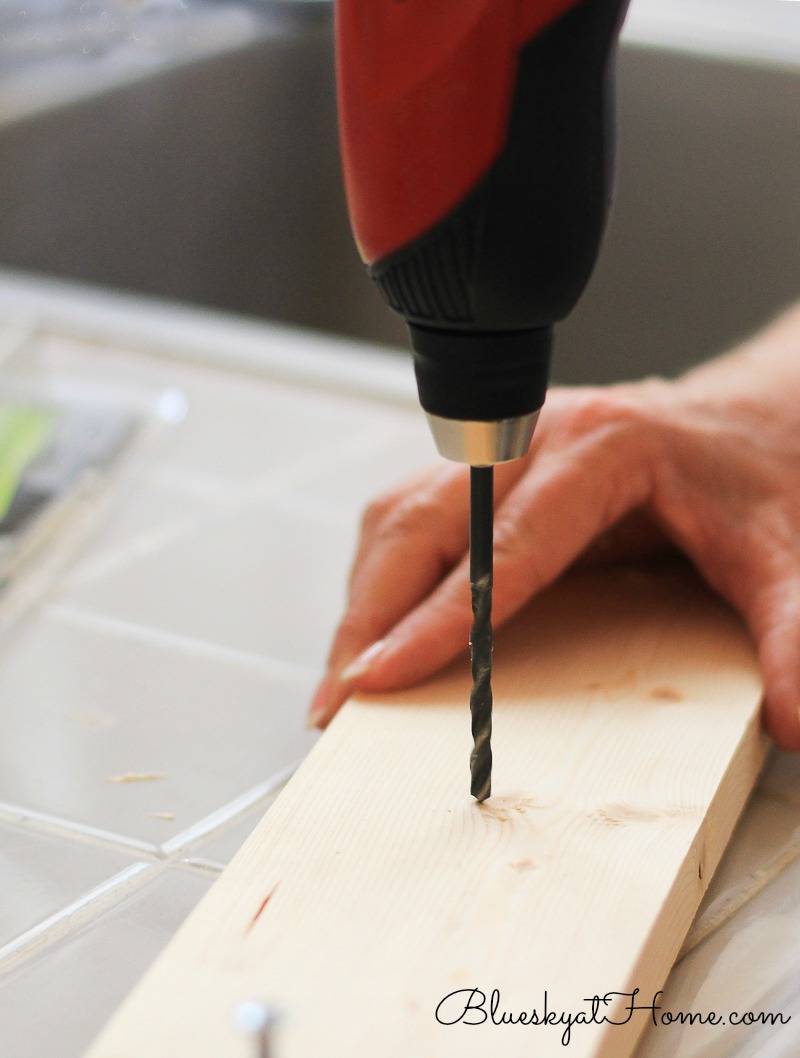
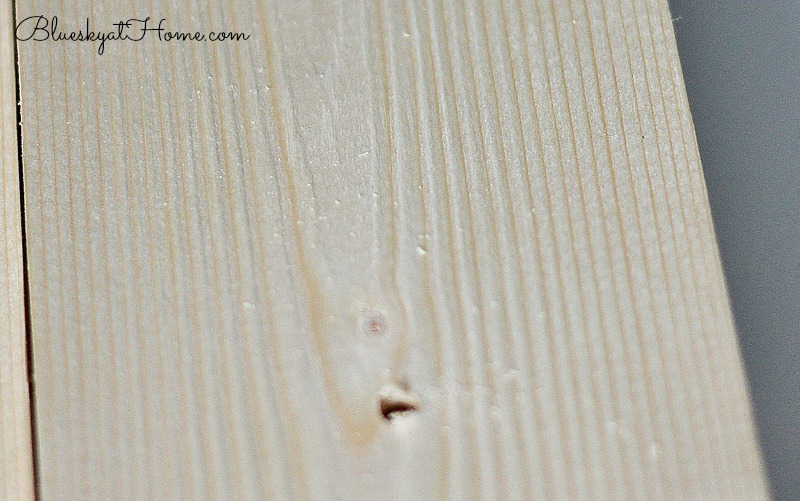
Then we screwed the screws about halfway into the boards. I used #10 2″ screws.
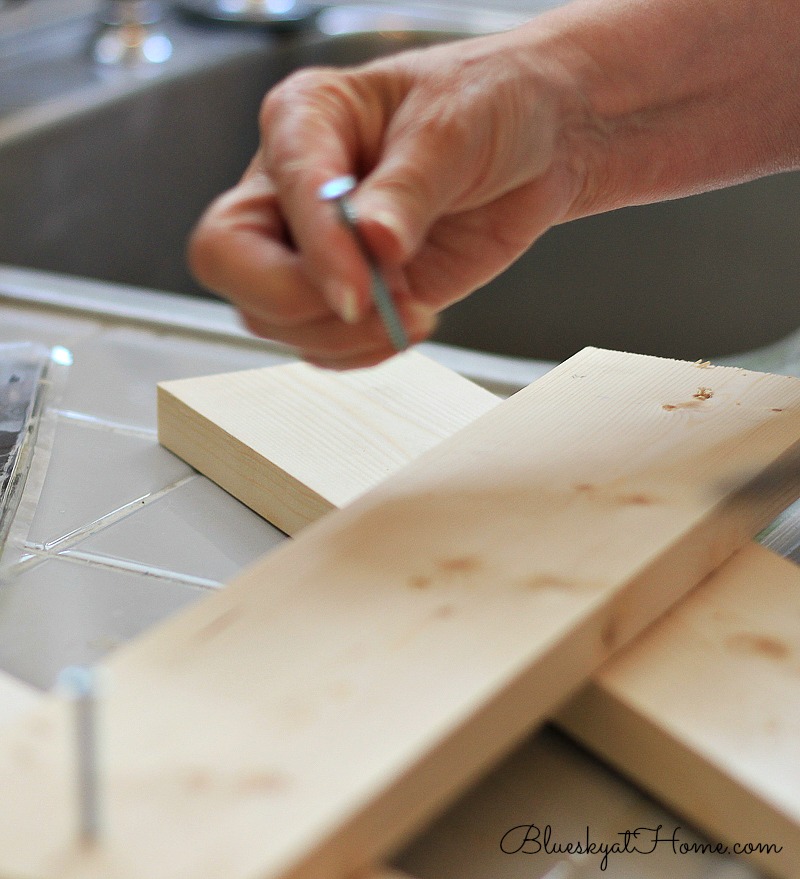
Drilling the boards into the wall was easy. We did find a couple of studs. See the pencil line? I’ll come back to that in a minute.
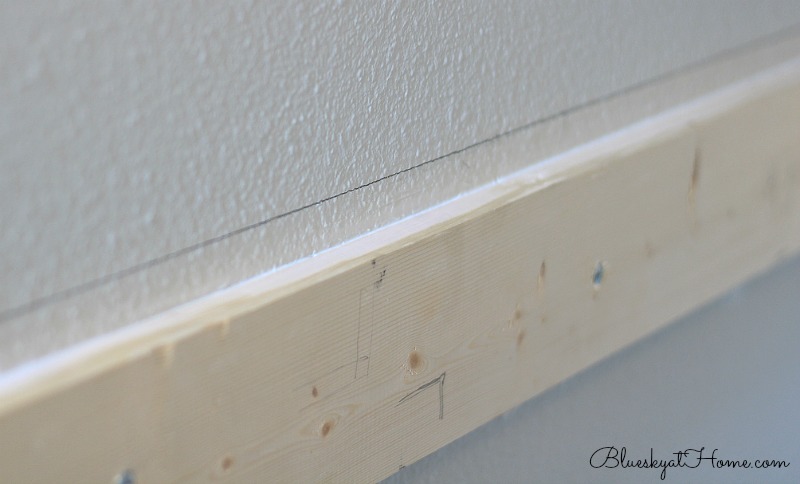
And then we drilled one of the back support boards into the wall. Again see the pencil mark? Here’s where “measure twice, install once” comes in. We continued with the back support boards, so proud of ourselves because the process was going so easy.
We reached the end and stood the vertical support board up against the wall. We realized immediately that our original measured lines and therefore our support boards were 3/4″ too high. Ugh, growl, a few choice words. We unscrewed the support boards, remeasured more carefully and reinstalled the horizontal support boards. The picture above and the one below are after we had remeasured and reinstalled.
BIG TIP: Check your measurements!!
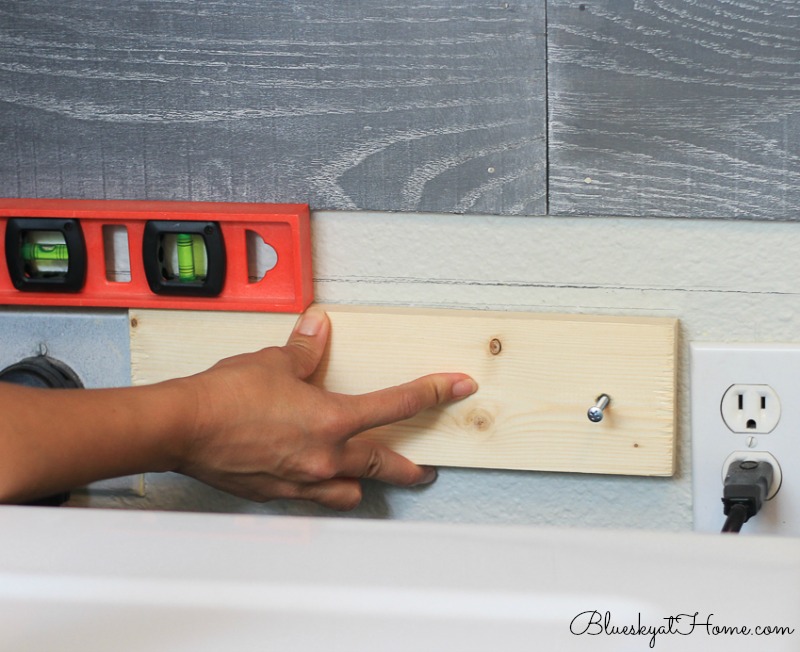
After we installed the horizontal boards, we installed the vertical support board. This board, our real handyman Cole, who came by to work on our sprinkler, suggested would give a firm support for the vertical board. Cole also suggested that we caulk all the support boards before we installed the countertops, which we did.
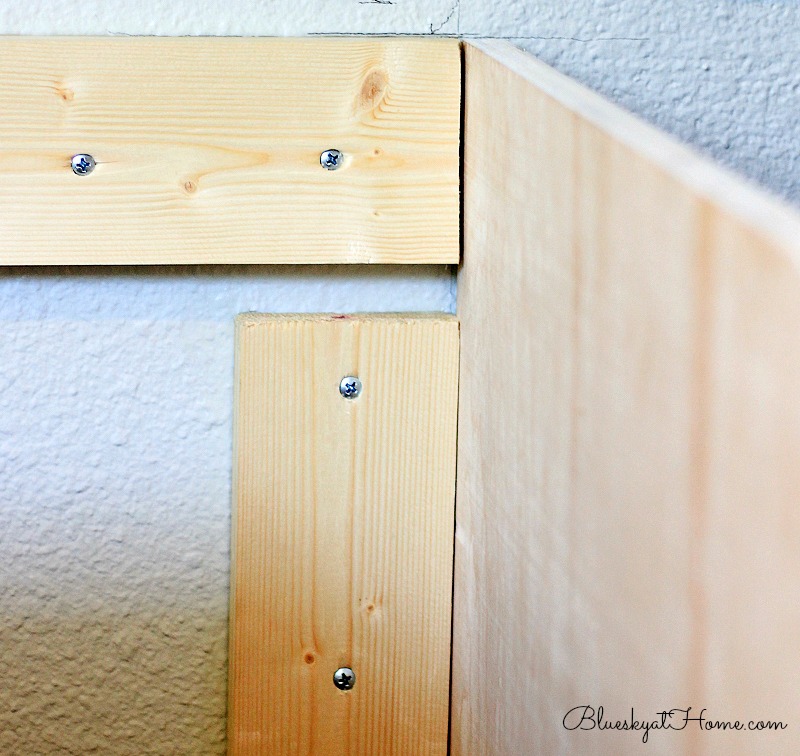
While he was at the house, Cole also cut out the space on the vertical board where it needed to go around the floor molding, which was about 1/2″ deep and 4″ tall. This meant that the vertical board could be mounted flush against the wall. Now we could attach the vertical board to the vertical support using 4 2″ L-brackets.
Here’s the vertical board installed with a flat molding almost attached. I used wood glue and finishing nails to attach it.
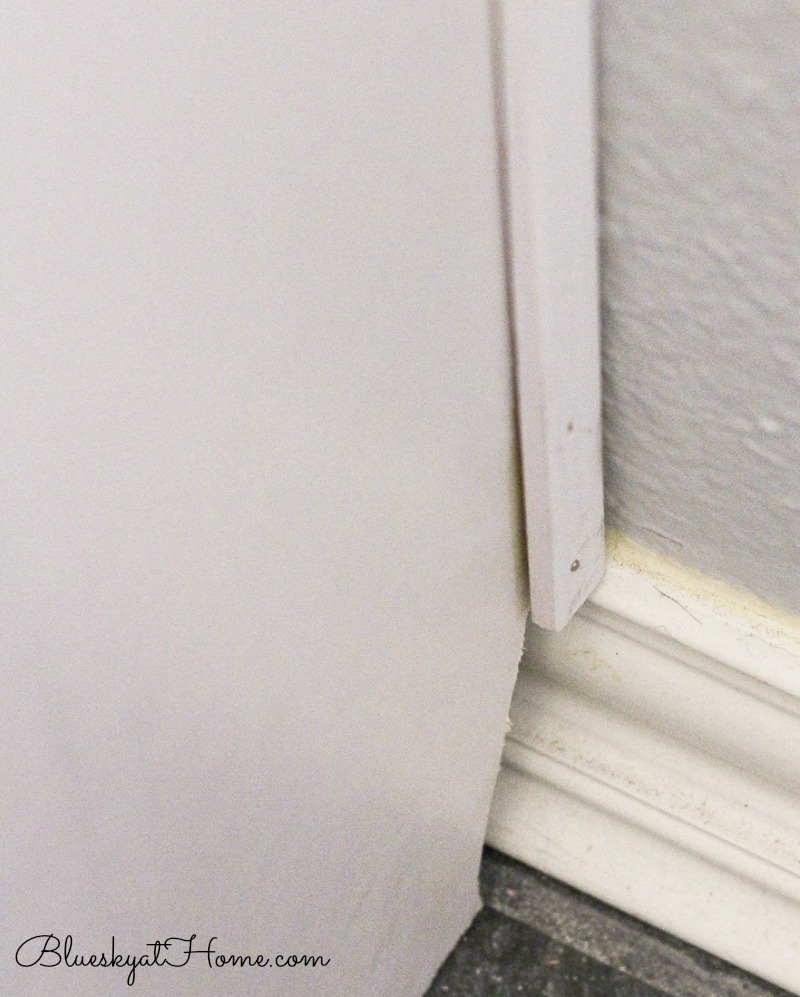
Installing the Laundry Room Countertop
Finally, we could mount the countertop on the horizontal supports and the vertical board. Again we used L-brackets to attach the countertop. First we moved the washer and dryer all the way to the wall to attach the countertop to the vertical support and then moved them back to the vertical support with about 1″ clearance.
Finally, we attached the countertop to the horizontal support on the wall. You can see in the picture below the raw edges of the countertop that I will cover with molding.
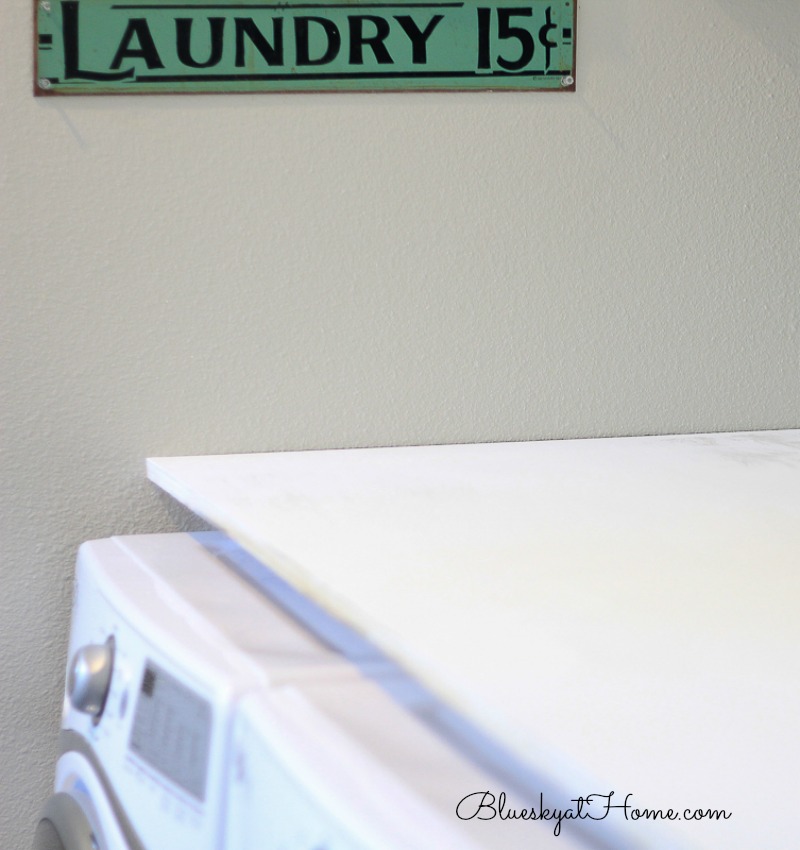
I now actually, finally had a countertop on the washer and dryer! I could see my vision coming true. Even without all the finish moldings attached, it looked great. The first time I took a load of clean clothes out of the dryer and folded them on the countertop, I knew I would love this new countertop.

Finishing the Laundry Room Countertop
Now it was time to attach the 3/4″ flat moldings to the raw edges of the countertops. I measured the moldings (very carefully!) and I used my miter box and handsaw to cut the molding. I needed 2 straight pieces ~ 1 for where the vertical board met the wall (see the photo above) and where the countertop and the vertical board met. For all the molding I used wood glue and finishing nails.
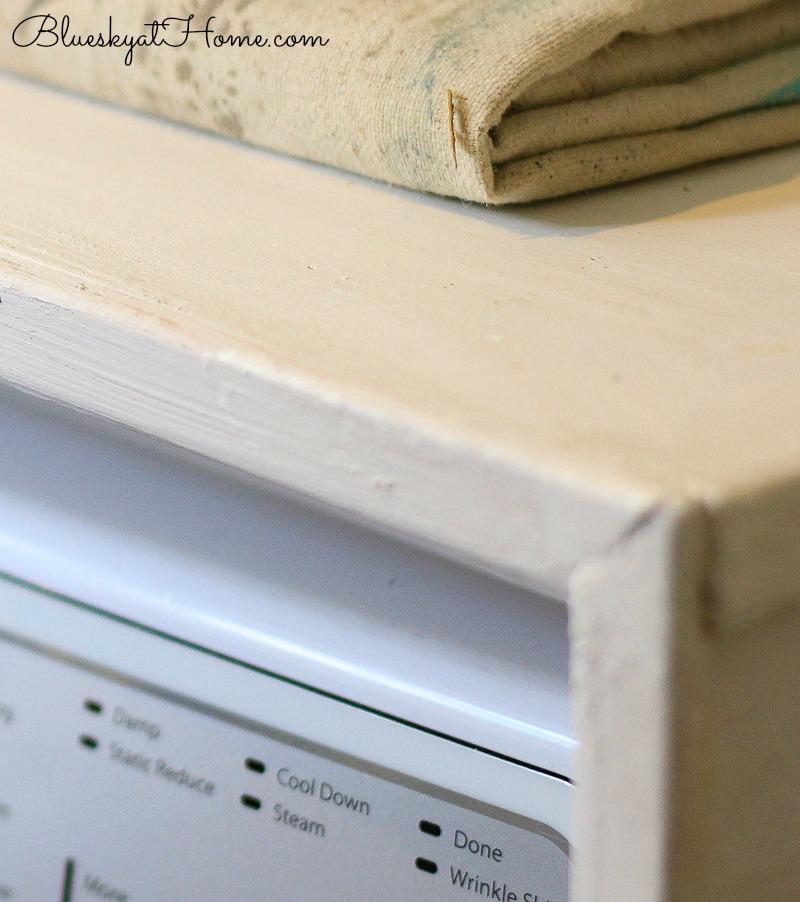
Then I needed 2 boards for the front of the countertop, 1 for the vertical board and 1 for the horizontal. I had to use my miter box for the first time to make a 45′ angle. I was a little nervous and I didn’t get it perfect, but I thought with a little caulk and paint, it would be fine.
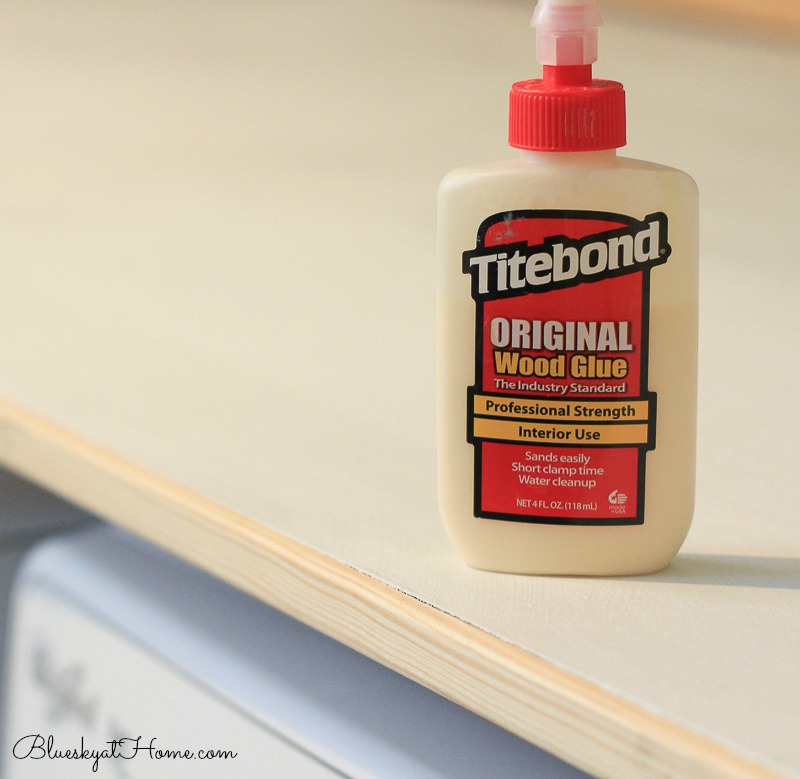

I had not painted the front molding, so that was my next step. I also discovered that the countertop makes a great place to paint with a drop cloth on top! I had not thought about that use before.

Now the final step was to figure out how to bridge the gap between the top of the counter and the bottom of the backsplash.
Since the top of the plumbing box stuck out about 1/8″, we couldn’t use a flat piece of molding; we needed something curved. I searched through the moldings at Lowe’s until I found this one which I thought would work. This molding was also 10′ long.
When I got home and put it against the counter, it was the perfect height to cover our gap and allow for the plumbing box.
Except, I discovered that the molding was warped and unusable! I took a picture of the bar code, sent it to Sweet Shark, and he stopped on the way home and picked up another piece. He told me he put about 16 pieces on the ground at Lowe’s until he found one that was straight.
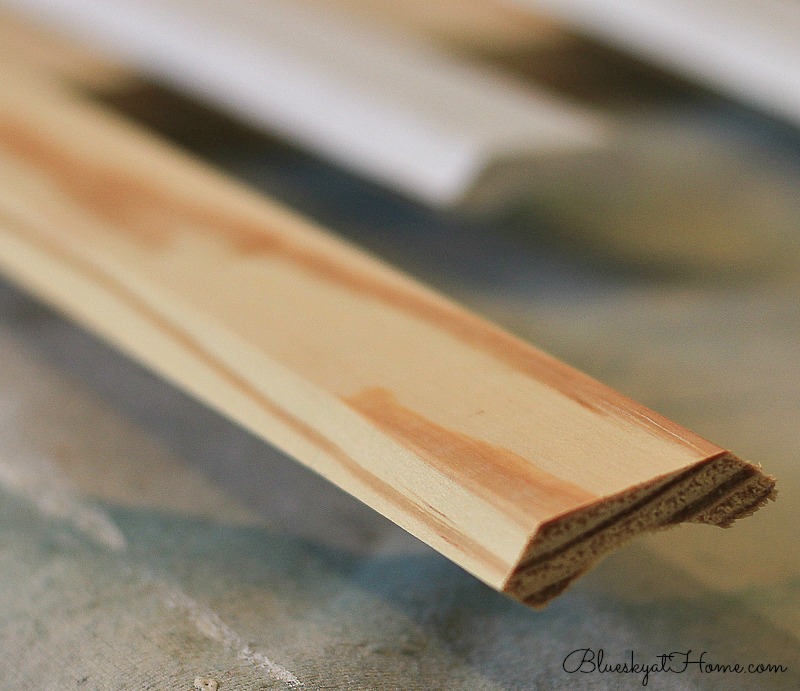
TIP: Check your wood at the store to make sure it’s straight.
We measured the length for the back of the countertop and cut it 75″ inch – the length of the countertop plus the width of the flat molding. The next day I returned the warped molding and got a straight one. This one I cut for the depth of the countertop – 30 1/2″. I painted both pieces with the One Step Bauhaus Buff. Now we had to figure out how to attach the 2 pieces of molding. Once again caulk and finishing nails came to the rescue.
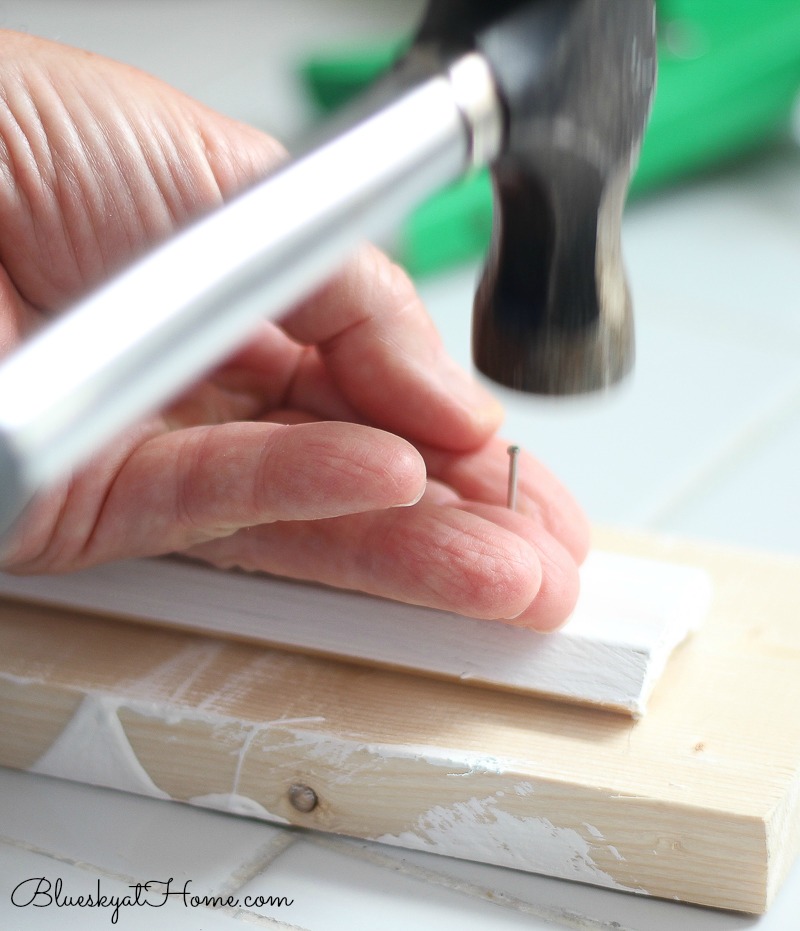
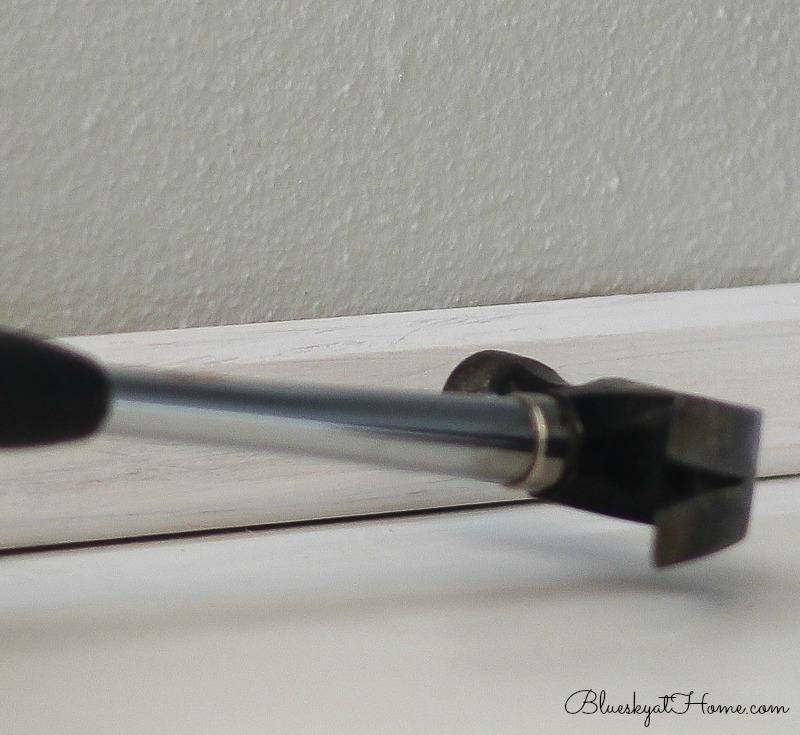
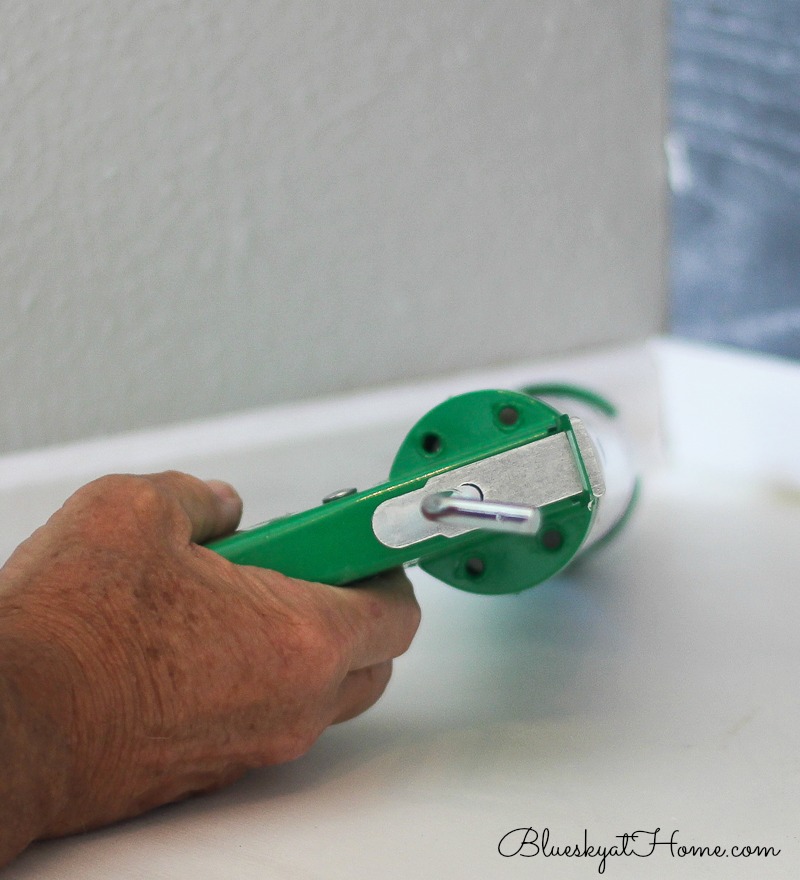
It’s amazing how well caulk fills in any existing gaps, and we had several. Plus the caulk just helps to secure the molding.
Sweet Shark told me that he learned when he worked construction in college that you have to use your finger to smooth the caulk.
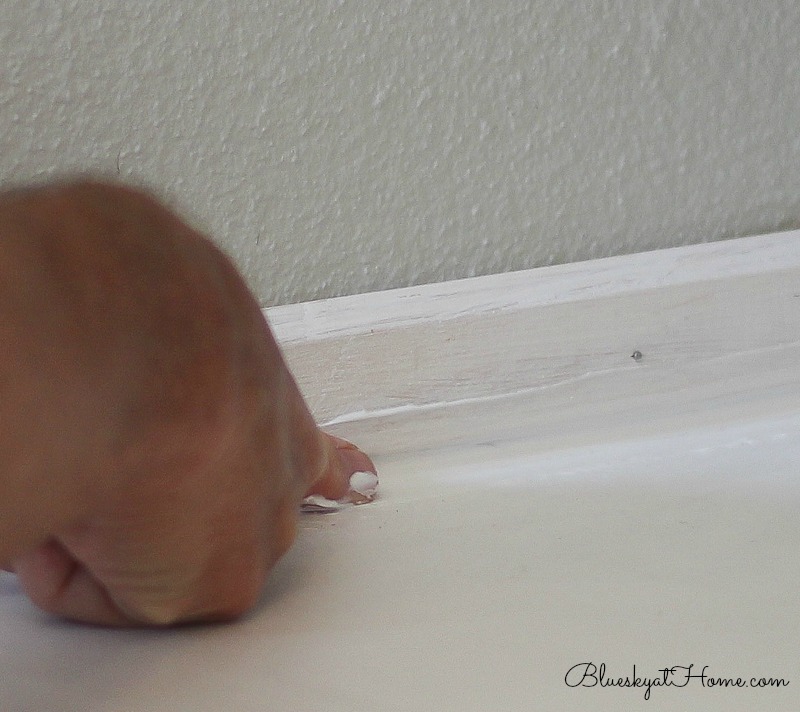
TIP: Use caulk to fill in gaps between molding and boards. It is my new best friend.
Last Steps
The laundry room countertop installation is complete and we (yes, even Sweet Shark) are loving it.
In addition to having a space to fold clothes and paint (an unintended bonus), the laundry room now has a cleaner, sleeker look. The plugs and plumbing are out of sight and (hopefully, no more socks or underwear lost behind the dryer) and the weathered barn wood backsplash provides an awesome focal point.
I also discovered that the space under the countertop on the washer and dryer is a great place to store my large stencils and foam boards. To cover the caulk and the finishing nails and give a cohesive finish to all the wood, I’m going to give everything one more coat of paint. But that’s for another day.
I also discovered that Sweet Shark is handier than I (or he let on) thought he was. He can hammer and saw and caulk. I think I’ll keep him around.
My next step is the really fun part: outfitting the laundry room with some pops of color, some accessories, and some more organizing pieces. So please check back next week for the final reveal. I can’t wait!
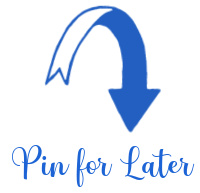
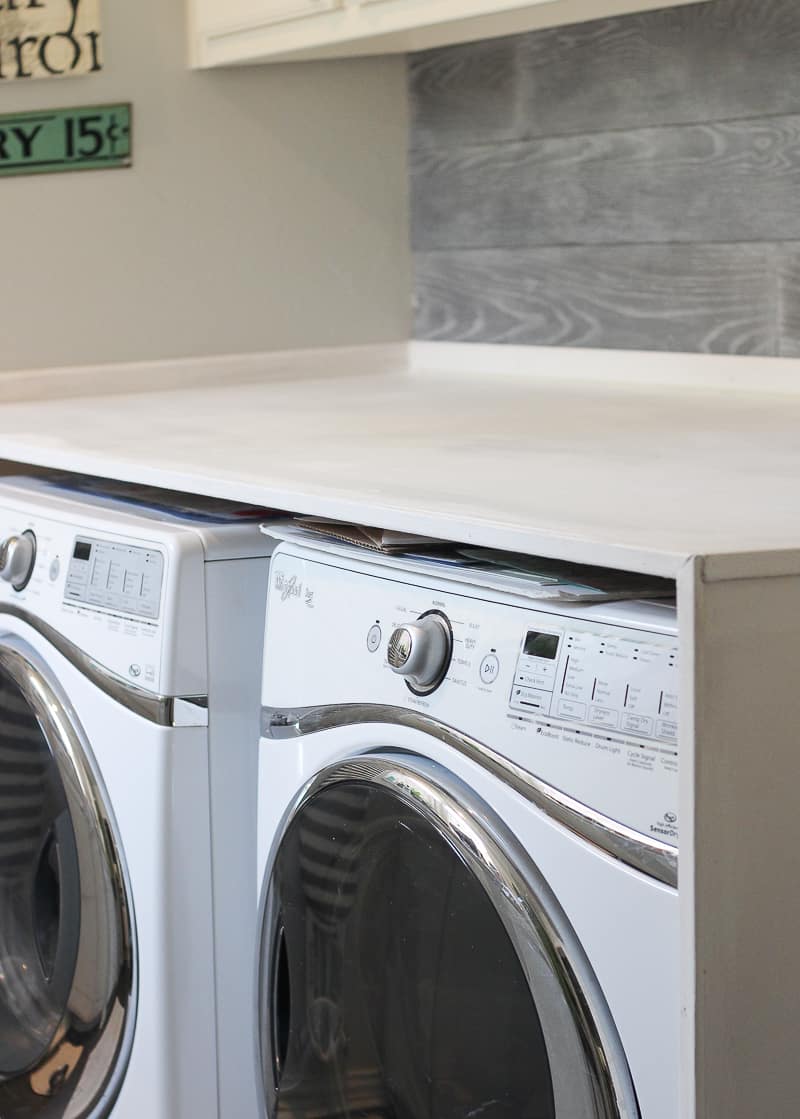
Be sure to PIN this project to follow the process for your own laundry room update.

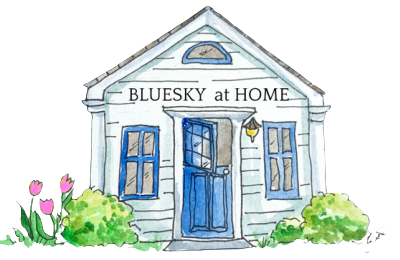

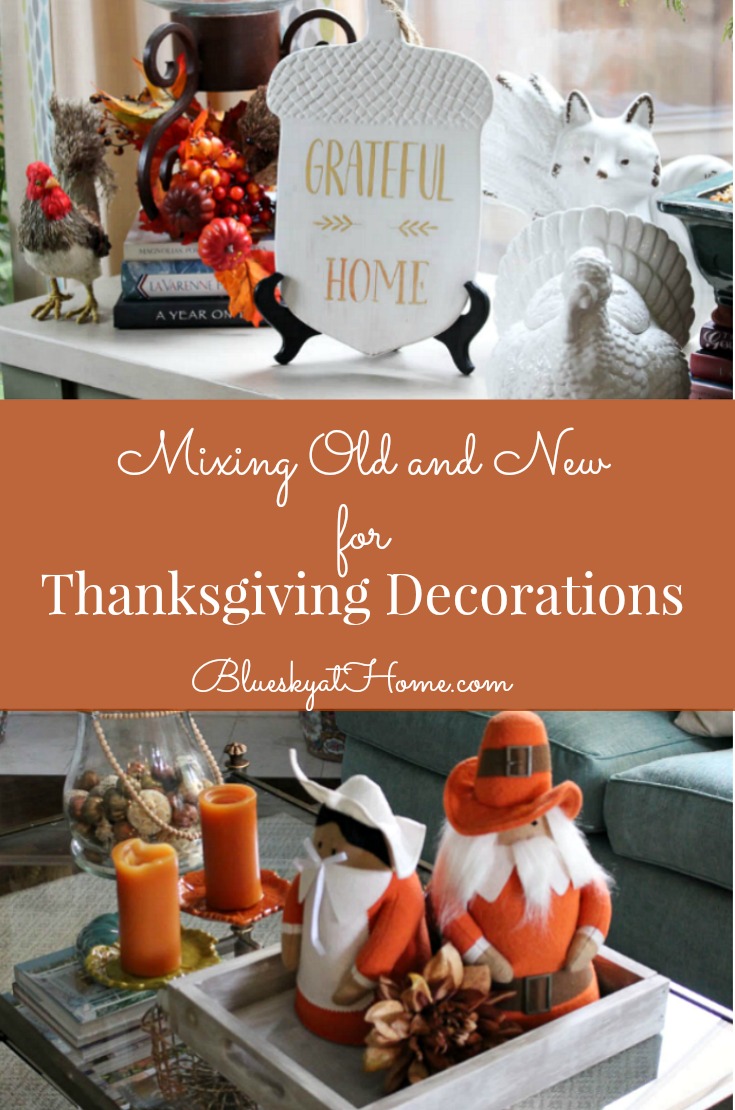
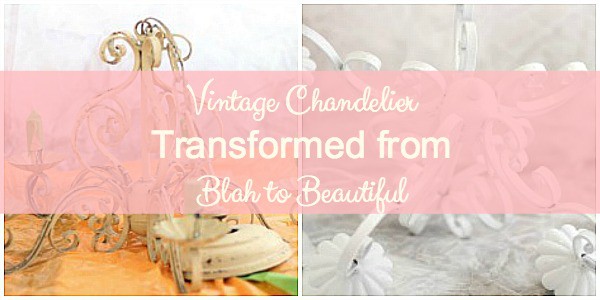
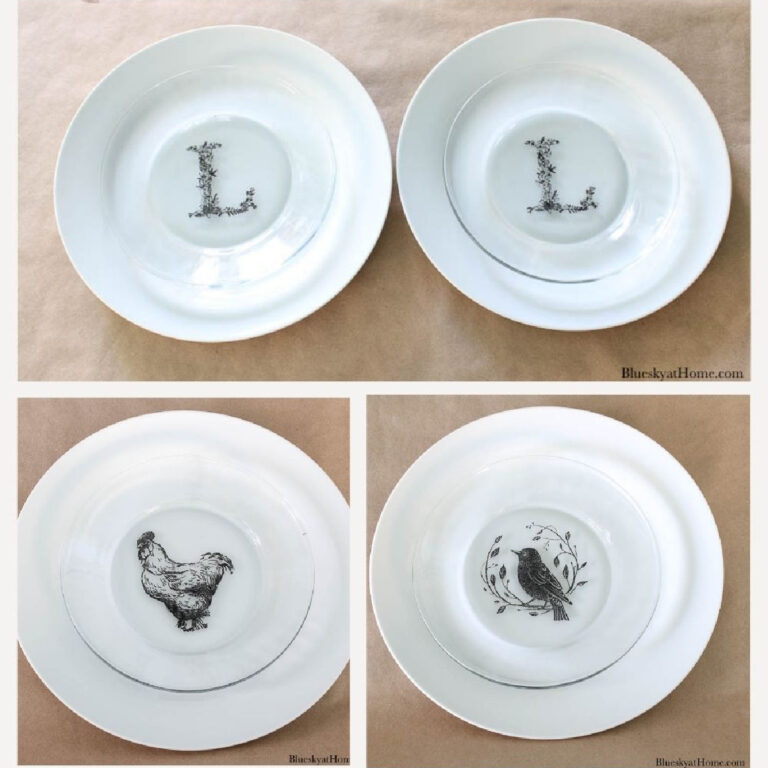
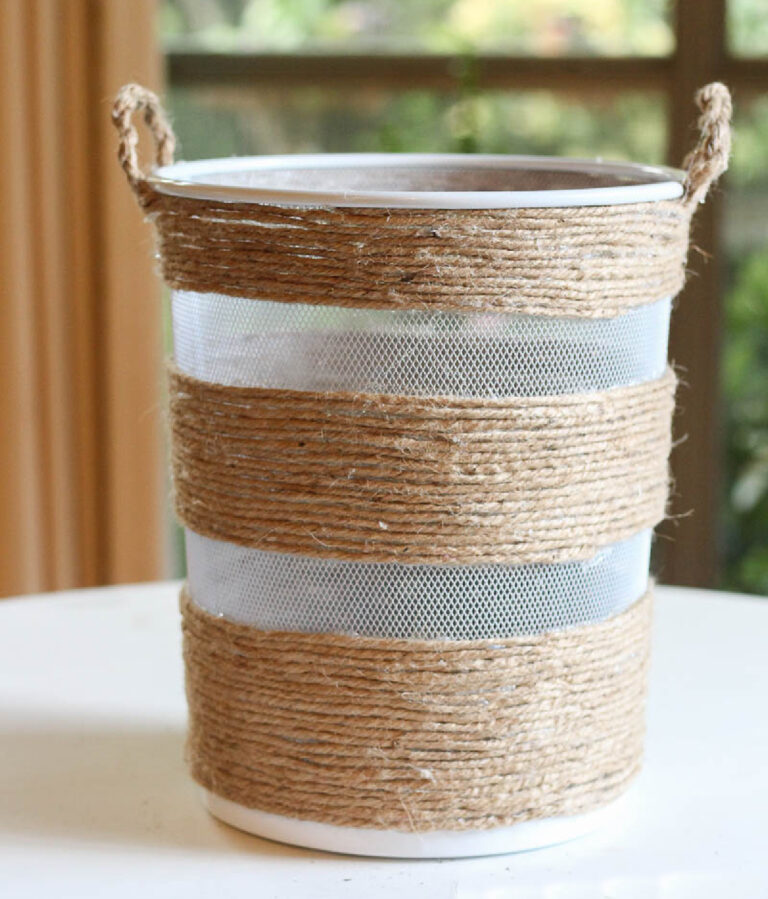
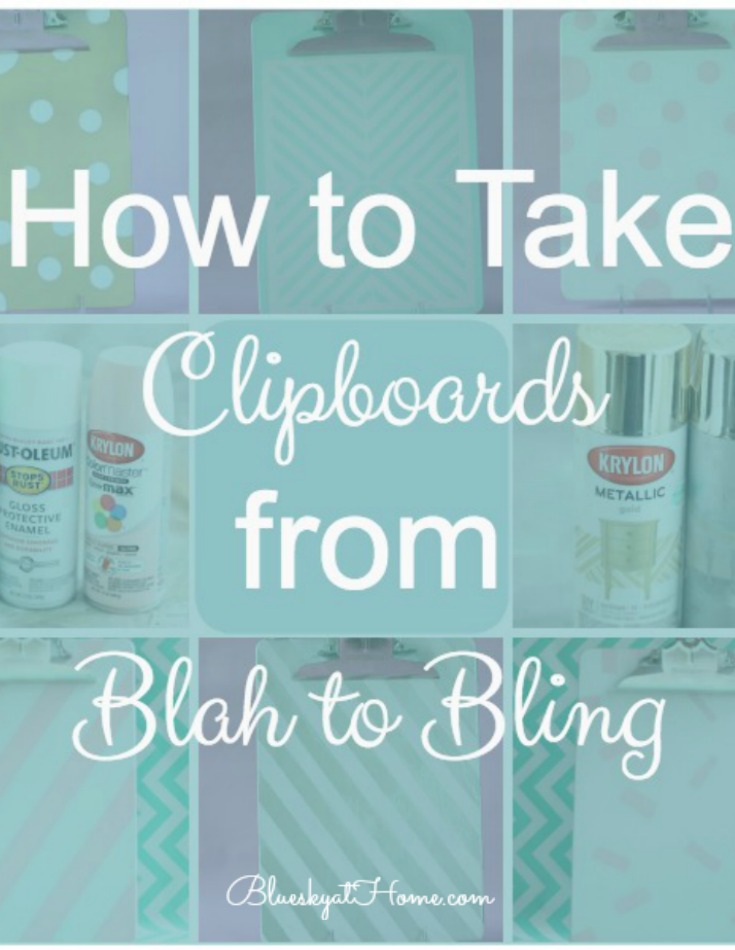
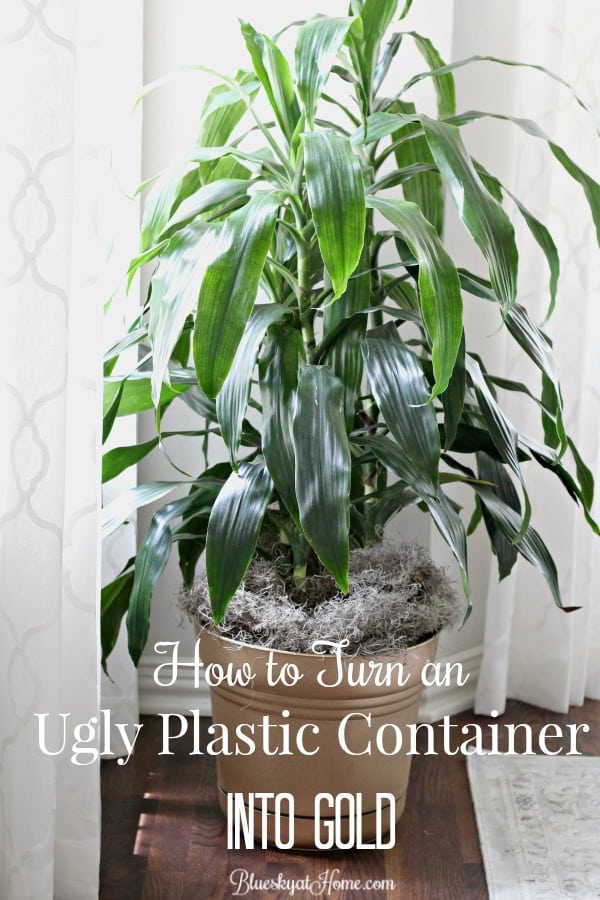
I think we used the Pythagorean Theorem at one point.
Jenn, We might have. Geometry was never my strong suit as it was yours. As you well know, I was more into metaphors, alliteration and diagramming sentences.